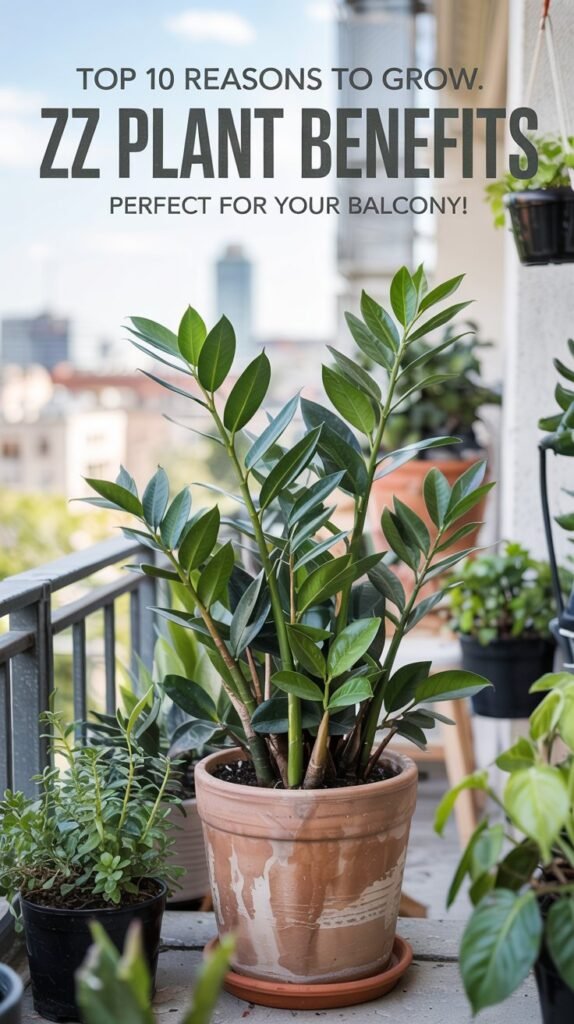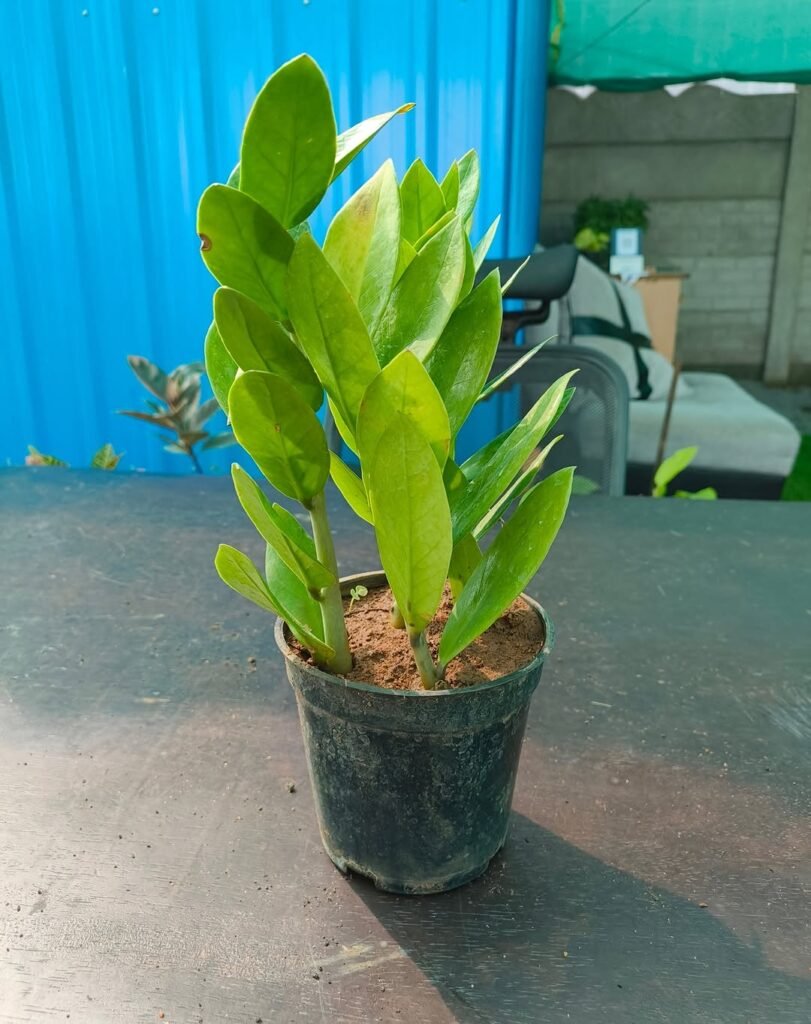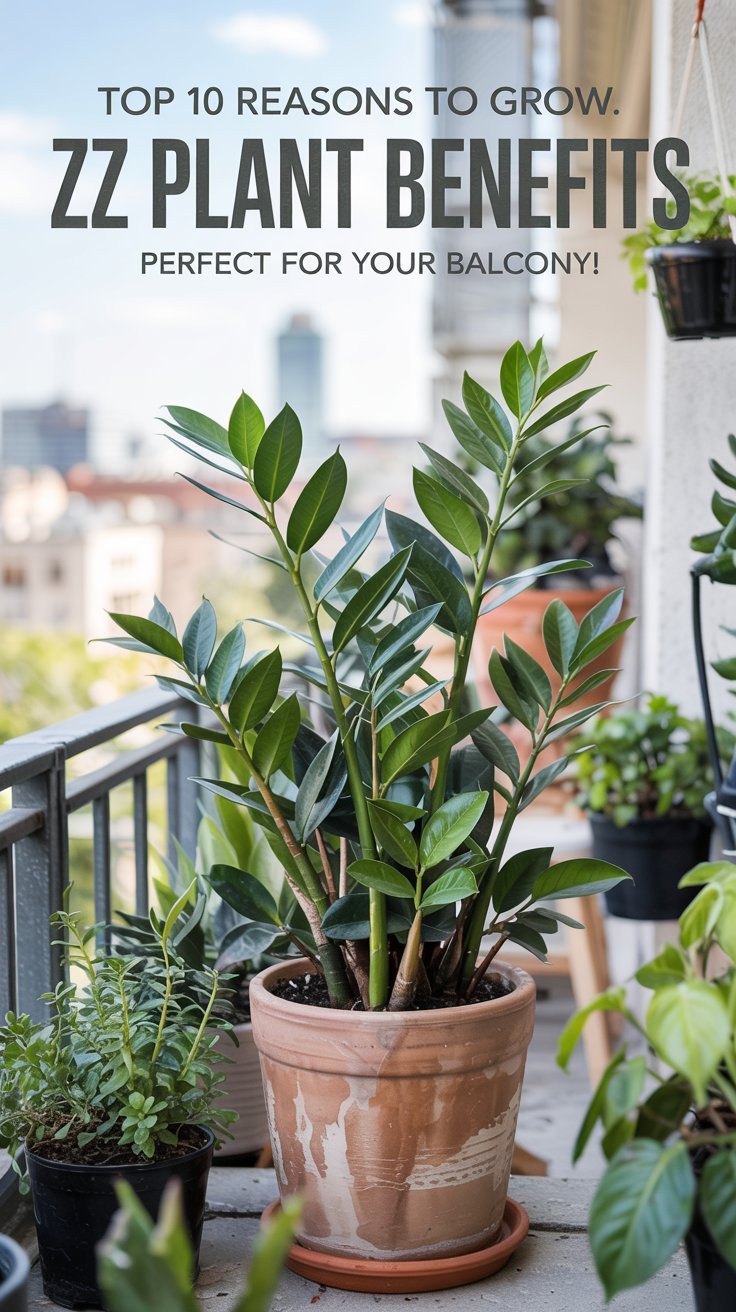Discover why the ZZ plant is a balcony superstar! From purifying air to surviving neglect, I’ll share 10 benefits (and my 10-year gardening tips) to transform your space.

Hi there! I’m Ashley Scott, a gardener with over a decade of experience turning small spaces into green oases. Today, I want to share why the ZZ plant (Zamioculcas zamiifolia) is my go-to choice for balcony gardens. Whether you’re a busy urbanite or a plant newbie, this hardy gem will surprise you!
Why the ZZ Plant Belongs on Your Balcony

The ZZ plant isn’t just another pretty leaf—it’s a survivor. I’ve tested countless plants on my shaded, windy apartment balcony over the years, and none have matched its resilience. Let’s dive into the 10 benefits that make it a balcony must-have:
1. Thrives in Low Light (Perfect for Shaded Balconies)
Most balconies get limited sunlight, especially in cities. My north-facing balcony gets just 2-3 hours of indirect light daily, but my ZZ plants have flourished for 5+ years. Unlike fussy ferns or flowering plants, ZZ’s glossy leaves photosynthesize efficiently even in dim corners.
Pro Tip: Pair it with other low-light champs like snake plants for a lush look.
2. Survives Forgetful Watering (I’ve Tested It!)
Last summer, I accidentally ignored my ZZ for 6 weeks during a family trip. Result? Zero drama. Its potato-like rhizomes store water, making it drought-tolerant. Water every 2-3 weeks, and you’re golden.
3. Purifies Air Naturally
A NASA Clean Air Study found ZZ plants filter toxins like xylene and toluene—common in urban apartments. While they’re no substitute for an air purifier, they’re a natural boost for balcony-to-indoor airflow.
4. Resists Pests and Diseases
Unlike my rose bushes that attract aphids, ZZ plants are pest-resistant. Their waxy leaves deter bugs, and I’ve never had to use neem oil on them. A win for organic gardeners!
5. Grows in Any Soil (Seriously!)
ZZs aren’t picky. I’ve grown them in regular potting mix, sandy soil, and even a cactus blend. Just ensure good drainage to prevent root rot.
6. Safe for Pets (Mostly)
While mildly toxic if ingested, ZZ plants aren’t as risky as lilies or sago palms. My cat nibbled a leaf once (no harm done), but it’s wise to place them out of reach. The ASPCA lists them as a mild irritant.
7. Adds Modern Style with Minimal Effort
Their architectural, upright leaves pair perfectly with sleek balcony furniture. I love using ZZ plants in matte black pots for a contemporary vibe.
8. Tolerates Temperature Swings
From 45°F winters to 90°F summers in my Midwest balcony, ZZ plants adapt. Just avoid frost—they’re tropical natives.
9. Slow Growth = Less Maintenance
ZZs grow slowly, so you won’t need to repot often. Mine stayed in the same pot for 3 years before needing an upgrade.
10. Boosts Mental Health
Studies from Harvard University show caring for plants reduces stress. My ZZ’s steady growth gives me a daily dose of calm—no blooms required.
How I Care for My Balcony ZZ Plants: 10 Years of Lessons
- Potting: Use containers 2-3 inches wider than the root ball.
- Watering: Soak soil thoroughly, then let it dry completely.
- Fertilizer: Half-strength liquid fertilizer once in spring/summer.
For more tips, check my guide on balcony gardening mistakes to avoid.
FAQs About ZZ Plants on Balconies
Q: Can ZZ plants survive winter on a balcony?
A: Only in zones 9-11. In colder areas, bring them indoors when temps drop below 45°F.
Q: Do ZZ plants flower?
A: Rarely indoors, but mine produced a small spathe-like bloom after 4 years!
Q: How tall do they grow?
A: Typically 2-3 feet, but mine hit 4 feet with annual repotting.
Final Thoughts
The ZZ plant is the ultimate balcony companion—low fuss, high reward. Whether you’re battling poor light or a hectic schedule, this plant thrives where others fail. Ready to try it? Share your ZZ journey with me at USA Garden Hub!
Loved this article? Explore my Reduce Your Garden’s Carbon Footprint: Eco-Friendly Gardening Tips next!




